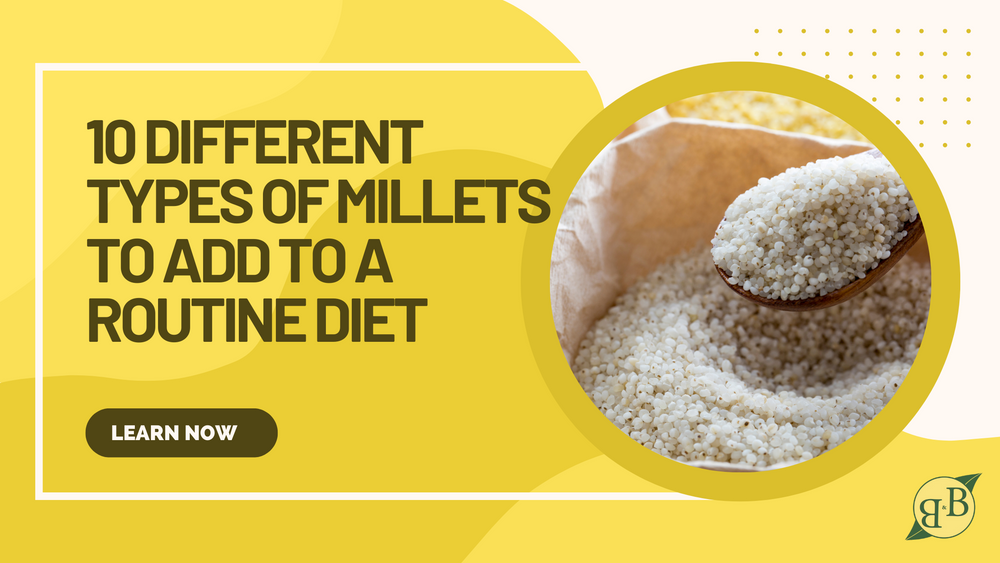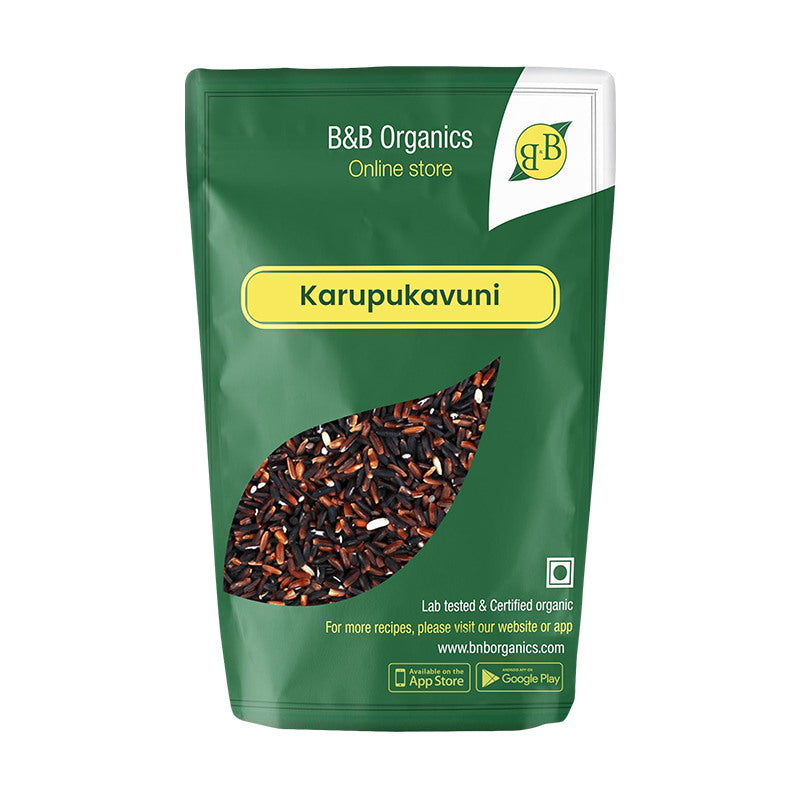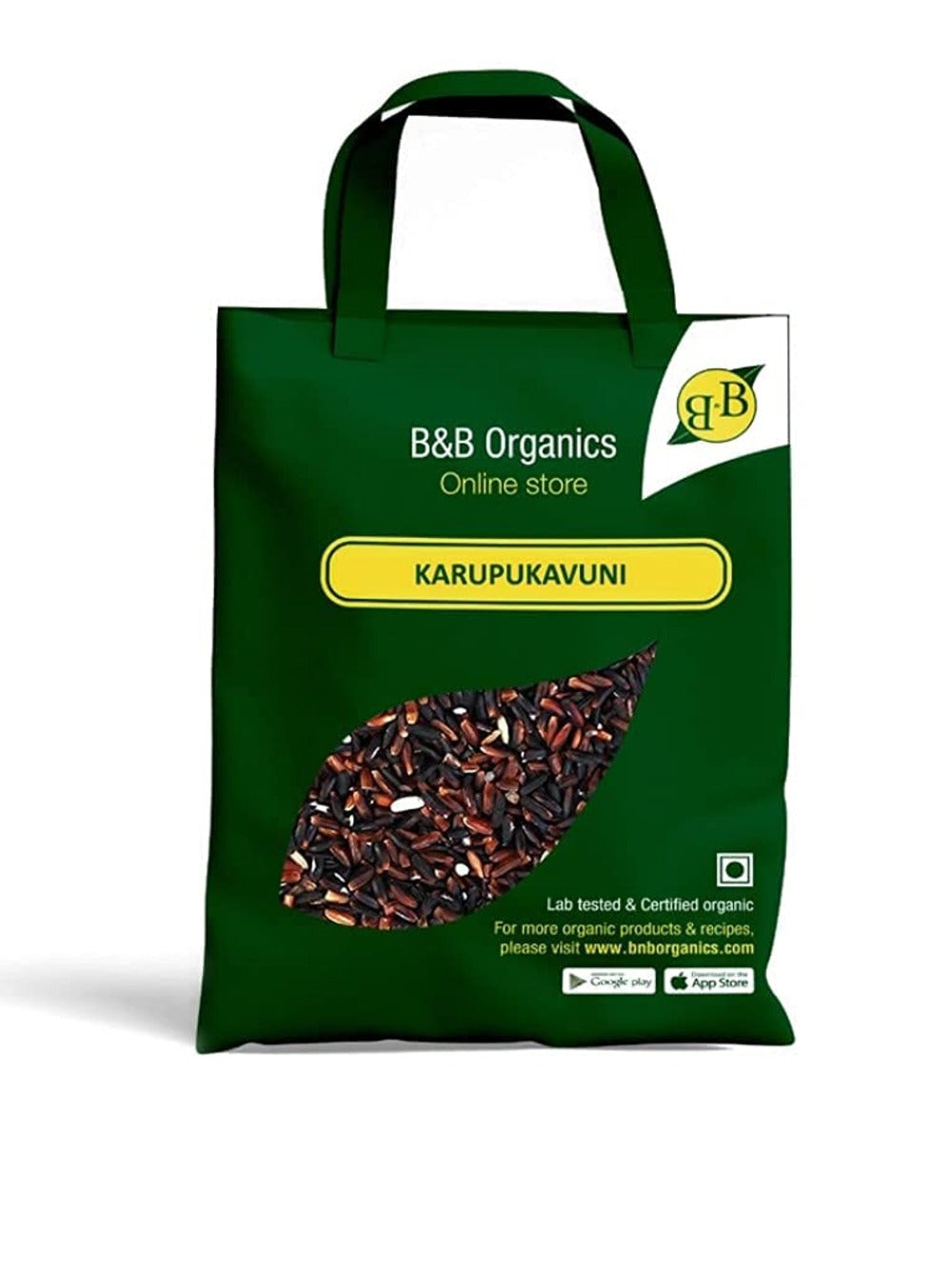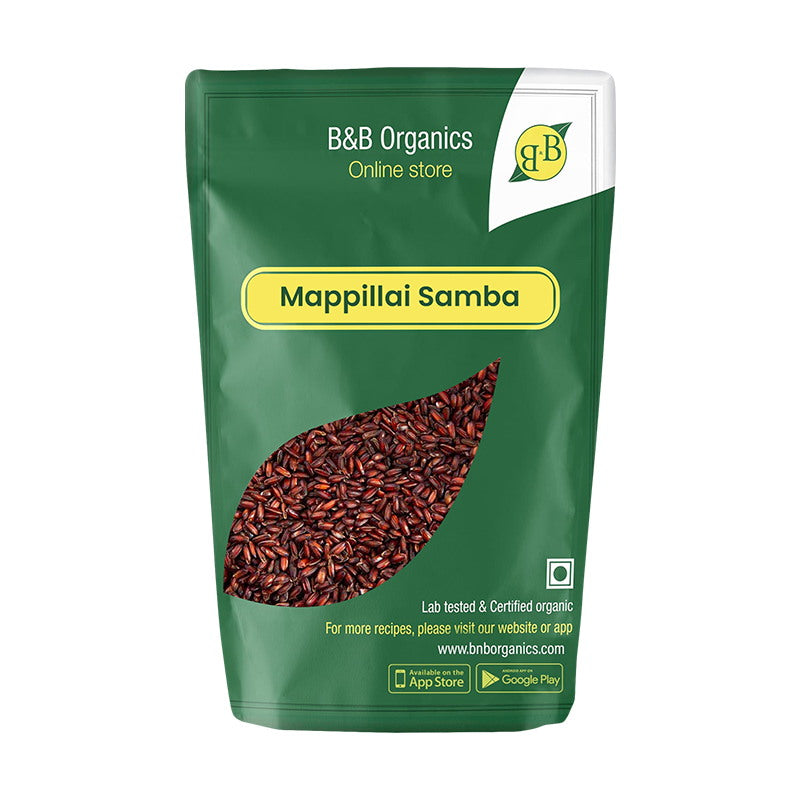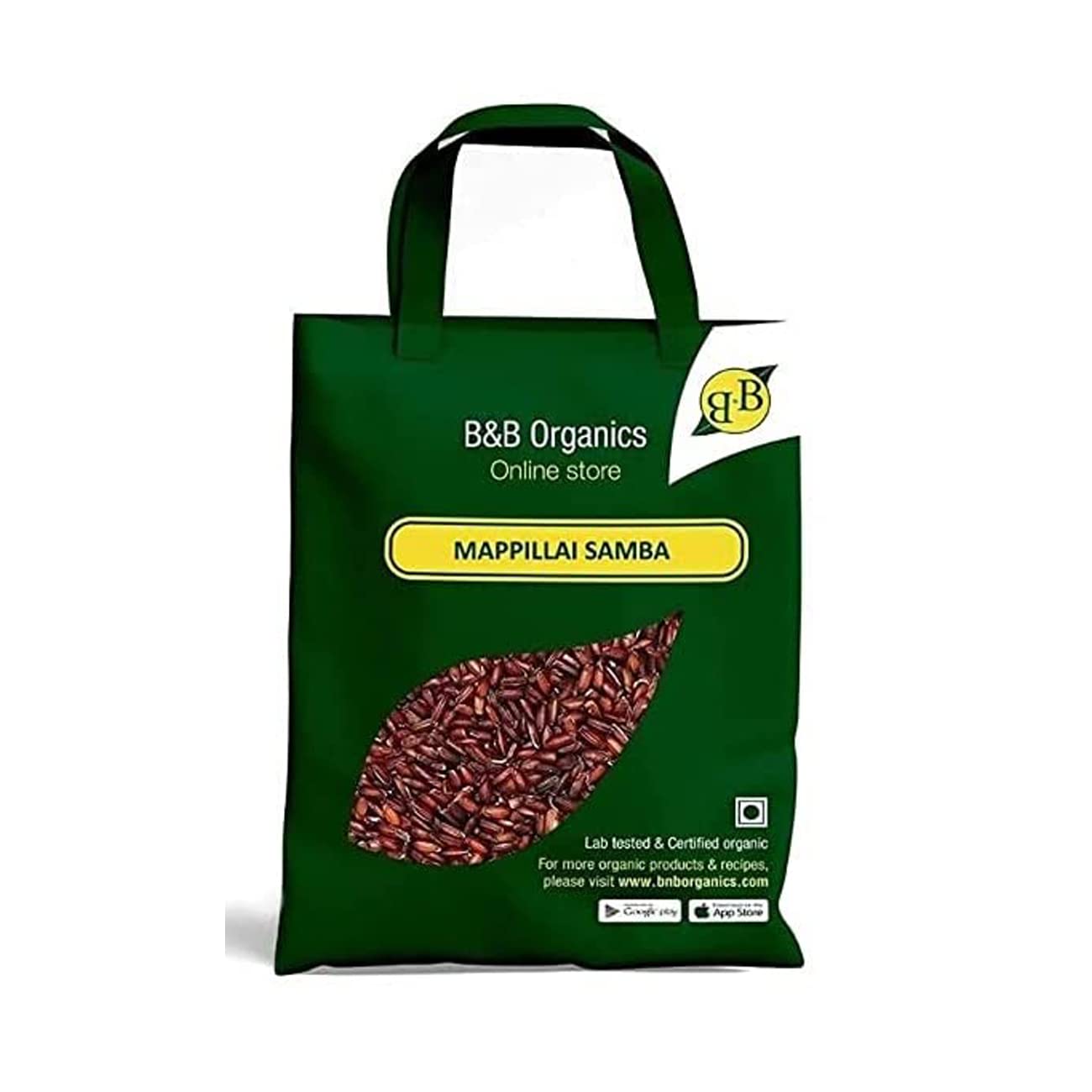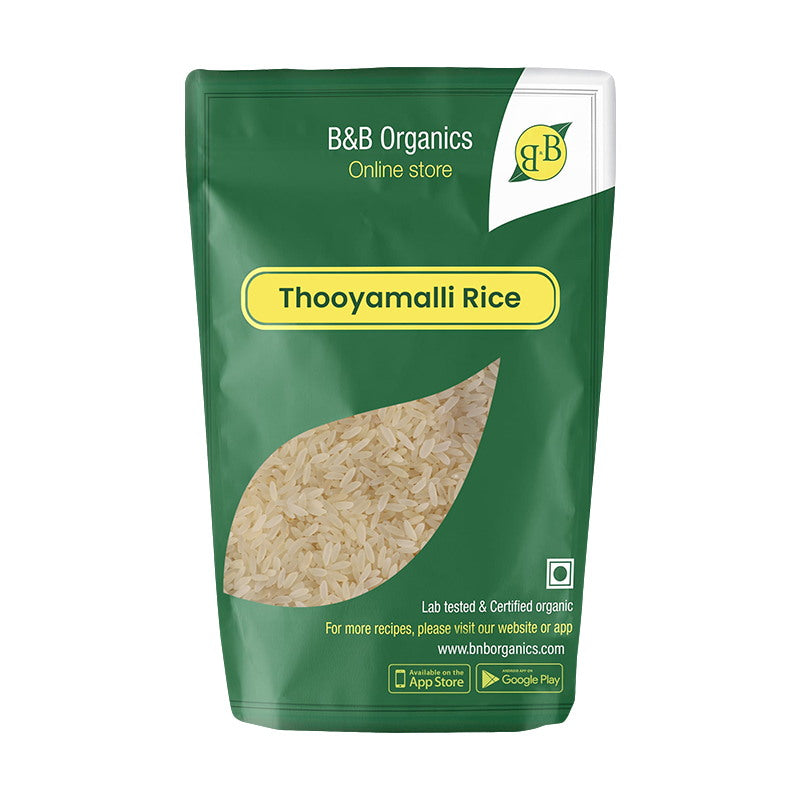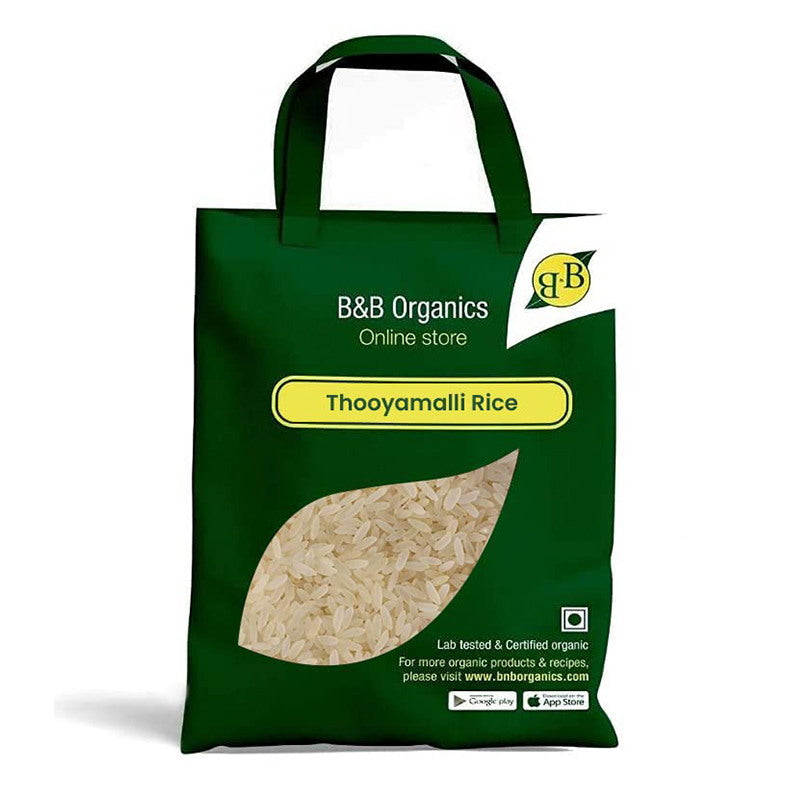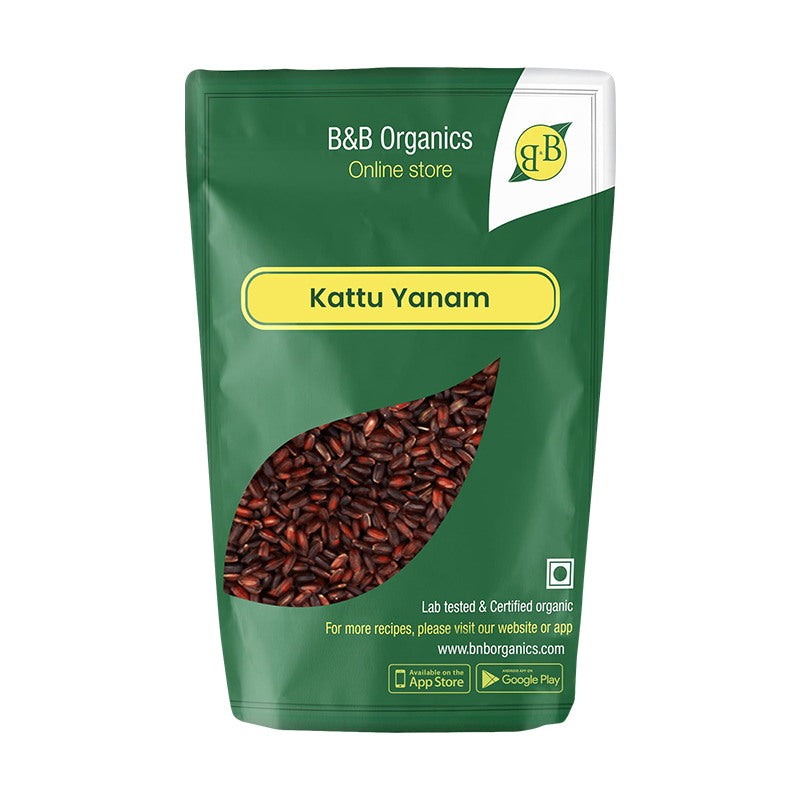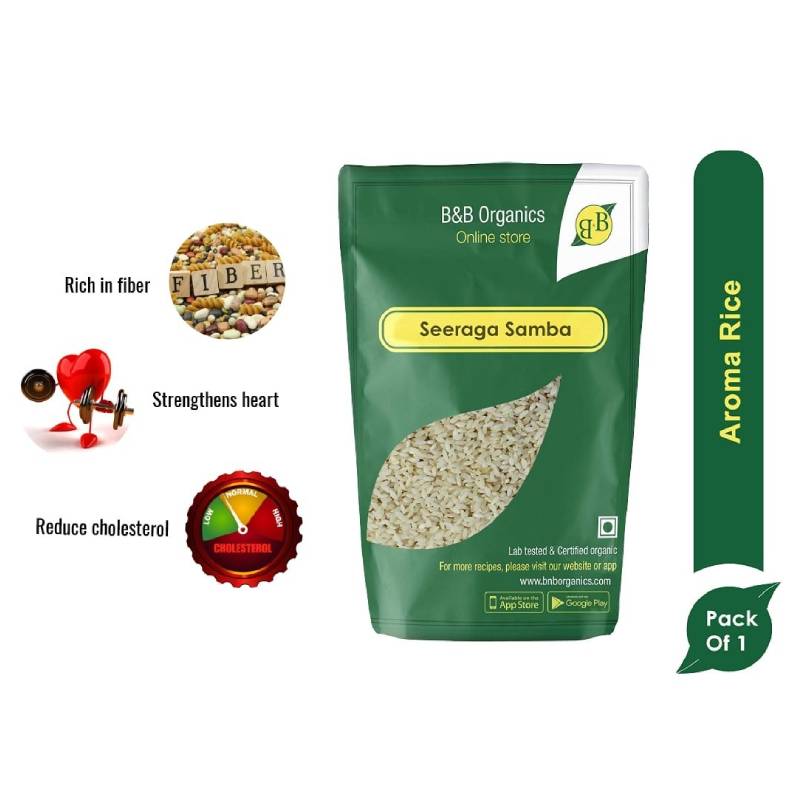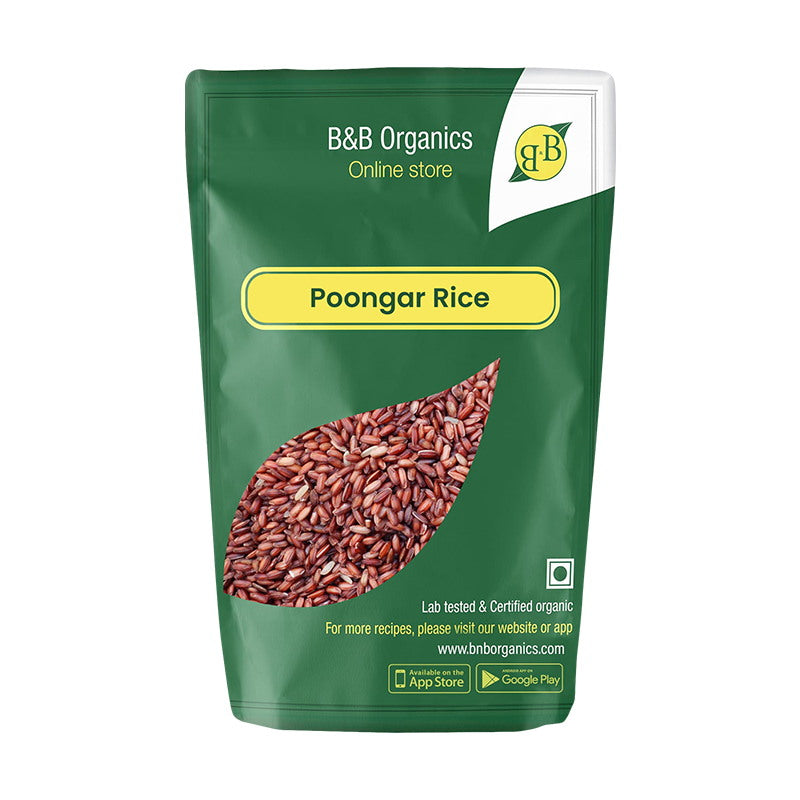Table of Contents:
- Introduction to Millets
- Nutritional Benefits of Millets
- Protein Content
- Essential Amino Acids
- B Vitamins
- Mineral Content
- Antioxidants
- Gluten Free and Diabetes Friendly
- Gluten Free Alternative
- Blood Sugar Control
- Antioxidant Properties
- Quercetin
- Curcumin
- Gallic Acid
- Avenanthramides
- Different Types of Millets
- Finger Millet
- Foxtail Millet
- Sorghum Millet
- Pearl Millet
- Buckwheat
- Little Millet
- Amaranth
- Barnyard Millet
- Proso Millet
- Kodo Millet
- Cooking with Millets
- Millet Breakfasts
- Millet Lunches
- Millet Dinners
- Millet Snacks
- Millet Desserts
- Storing and Handling Millets
- Conclusion
Introduction to Millets
Millets are one of the oldest cereal grains known to humans, having been consumed for thousands of years starting in Africa and Asia. These highly variable small-seeded grasses are widely grown around the world as cereal crops for both human food and animal feed.
There are various species of millets that come in a range of colors including white, gray, yellow and red. They have a small seeded, round or spherical shape. The size of millet seeds can vary with the smallest seeds belonging to minor millets and the larger seeds from major millets.
Nutritionally, millets are considered to be powerhouses. They have very high nutritional value, being much more nutritious than more commonly consumed grains like wheat and rice. In terms of proteins, vitamins, minerals, antioxidants and other beneficial compounds, millets can contain up to 5 times the amount found in other grains.
Additionally, millets are naturally gluten-free and many varieties have a low glycemic index. This makes them uniquely suited for those with gluten sensitivities or diabetes. Because of their impressive nutritional profile and health benefits, initiatives like the United Nations declaring 2023 as the International Year of Millets are aimed at increasing global production and consumption of these grains.

Nutritional Benefits of Millets
There are many beneficial nutrients found in the various types of millets. Here is an overview of some of the key nutrients that make these grains such a valuable addition to diets around the world:
Protein Content
Millets contain significant amounts of high-quality protein. In fact, some millets can contain up to twice the amount of protein found in certain grains like rice or corn.
The protein in millets provides the essential amino acids needed for growth, muscle development, and repairing tissues in the body. Additionally, the protein in millets is more easily digested compared to protein from wheat and rice.
For those who follow vegetarian or vegan diets, millets can serve as an important plant-based source of protein to meet daily needs. Incorporating millets into meals and snacks can help enhance the protein quality of vegetarian diets.
Essential Amino Acids
In addition to being high in protein overall, millets also contain significant amounts of essential amino acids. Some of the key amino acids provided include:
- Methionine: Needed for growth and tissue repair. Also promotes liver health.
- Lysine: Important for calcium absorption and converting fatty acids into energy.
- Tryptophan: Precursor for serotonin, which regulates mood and sleep.
- Threonine: Supports a healthy immune system and intestinal mucous membranes.
Getting all essential amino acids from plant-based foods can be challenging, so millets help fill those nutritional gaps. The amino acids in millets also help support many important bodily functions.
B Vitamins
Millets supply an array of B vitamins such as:
- Thiamin - B1
- Riboflavin - B2
- Niacin - B3
- Pantothenic acid - B5
- Pyridoxine - B6
These B vitamins help convert the carbohydrates, fats and proteins from foods into usable energy. They also support nervous system health, promote skin and hair growth, and help maintain proper muscle tone in the gastrointestinal tract.
Getting enough B vitamins like thiamin and niacin is also important for cognition, as deficiency can lead to cognitive impairment over time. The variety of B vitamins in millets supports cellular energy production and overall wellbeing.
Mineral Content
Millets contain a wide array of minerals that are important for health. Some of the key minerals provided include:
- Phosphorus - Key for bone health, DNA synthesis, and energy production.
- Magnesium - Needed for bone mineralization, muscle and nerve function, immunity.
- Manganese - Aids bone building and metabolism of carbs, amino acids and cholesterol.
- Copper - Helps form red blood cells, supports immune function and iron absorption.
- Iron - Required for blood cell production and oxygen transport in the body.
- Zinc - Supports growth, DNA synthesis, wound healing, thyroid function.
- Calcium - Needed for building and maintaining strong bones and teeth.
Getting this range of minerals from whole food sources like millets can help prevent deficiencies that can cause health issues over time. The minerals in millets support many vital bodily processes.
Antioxidants
In addition to macronutrients and minerals, millets also provide beneficial plant compounds called antioxidants. Some of the key antioxidants include:
- Quercetin: Anti-inflammatory and anti-allergenic effects.
- Curcumin: Potent antioxidant with anti-inflammatory properties.
- Gallic acid: Antimicrobial and anticancer abilities.
- Avenathramides: Reduce blood pressure and support cardiovascular health.
These antioxidants found in millets can help neutralize harmful free radicals in the body. This decreases oxidative stress, which is linked to aging and development of chronic diseases.
Including antioxidant-rich foods like millets in your diet helps boost the body’s defenses and lower the risk of certain diseases over time.
Gluten Free and Diabetes Friendly
Two of the major advantages of millets that make them so valuable from a dietary perspective are:
- They are 100% gluten-free grains
- They have low glycemic indexes
These attributes make millets an optimal choice for those managing celiac disease or diabetes, respectively.
Gluten Free Alternative
For those living with celiac disease or a gluten sensitivity, following a strict gluten-free diet is a must. However, completely avoiding glutenous grains like wheat and barley can make getting key nutrients from grains challenging.
The gluten-free nature of all millet varieties provides a tasty and nutritious grain-based alternative to popular gluten-containing staples like bread, pizza crusts, cereals, etc.
For those with celiac disease or gluten intolerance, incorporating millets helps add variety to menus without risk of adverse symptoms or intestinal damage that gluten can trigger.
Using millet flours and millet puffs makes it easy to prepare gluten-free recipes at home across all meals and snacks.
Blood Sugar Control
In addition to being gluten free, millets also have relatively low glycemic indexes compared to common grains like rice and wheat. The glycemic index measures how quickly and how much a food can raise an individual’s blood sugar levels.
Foods with a high glycemic index cause rapid spikes in blood glucose and insulin secretion. Over time this can increase the risk of developing prediabetes or diabetes type 2.
In contrast, the overall lower glycemic index of all millets means they are digested and absorbed more slowly. This leads to a gradual, slower release of sugars into the bloodstream and a more gradual insulin response.
Consuming low glycemic foods like millets is extremely beneficial for individuals with diabetes. Keeping blood sugar levels more stable can help manage diabetes and reduce risks associated with blood sugar fluctuations.
For those without diabetes, eating low glycemic foods like millets also helps maintain healthy blood sugar regulation day-to-day.
Antioxidant Properties
Beyond providing important macronutrients, minerals and vitamins, millets are also packed with beneficial plant compounds called antioxidants. These antioxidants contribute to the many health benefits associated with regular millet consumption.
Some of the powerful antioxidants found in the various millet varieties include:
Quercetin
This antioxidant flavonoid is found in ragi (finger millet) and barnyard millet. It has strong anti-inflammatory and anti-allergy properties.
The high quercetin content of millets has been linked to reduced risk of certain chronic diseases including heart disease, neurodegenerative disorders, and various types of cancer.
Quercetin helps prevent oxidative damage to cells. It also supports immune function by inhibiting the release of histamines that cause inflammation and allergy symptoms.
Curcumin
Curcumin gives turmeric its vibrant golden color. This potent antioxidant is found in sorghum millet in significant amounts.
Extensive research has shown curcumin has remarkable anti-inflammatory, antioxidant, and even anti-cancer benefits. It helps prevent oxidative damage while also suppressing inflammation pathways in the body.
Curcumin has been shown to be neuroprotective as well, helping prevent cognitive decline associated with aging and neurodegenerative disease.
Gallic Acid
Also known as 3,4,5-trihydroxybenzoic acid, this phenolic antioxidant is found in certain millets like finger millet and pearl millet.
Studies have shown gallic acid possesses antimicrobial, antiviral and anticancer abilities. The antioxidant and anti-inflammatory properties of gallic acid can help prevent DNA damage and cell mutations.
Research indicates foods high in gallic acid may help protect against chronic illnesses like heart disease, diabetes, and certain cancers.
Avenanthramides
This unique antioxidant is found almost exclusively in oats and oat millet. Avenanthramides provide powerful antioxidant protection to cells from oxidative damage.
The avenanthramides found in oat millet are also beneficial for cardiovascular health. They help dilate blood vessels and reduce blood pressure levels.
Additionally, avenanthramides exhibit anti-itch and anti-inflammatory properties on the skin when applied topically. The antioxidant content of millets can really enhance their anti-aging health benefits.
Different Types of Millets

There are many varieties of millets grown and consumed around the world. The major millets are more widely cultivated as cereal crops, while minor millets are often grown in more niche or regional markets.
Here is an overview of 10 of the most popular types of millets and their specific health benefits:
Finger Millet
Also known as ragi, finger millet is one of the most commonly consumed millets. Particularly in South Asian and East African cuisines, finger millet is a staple cereal crop.
This millet is an excellent source of dietary calcium, providing about 10 times the amount of other major cereals. Calcium supports bone health, muscle and nerve function.
Finger millet is also very high in iron content compared to other millets. Adequate iron intake prevents anemia which can impair cognition and immune function.
Ragi is rich in amino acids, making its protein content easily digestible and a high-quality plant-based protein source.
Additionally, ragi is naturally gluten-free. This makes it an ideal grain for those following a gluten-free diet due to celiac disease or gluten intolerance.
Foxtail Millet
Known as thinai in Tamil, kakum or kangni in Hindi, and navane in Kannada, foxtail millet is a common staple in the cuisine of southern India.
Foxtail millet is an excellent source of antioxidant polyphenols like ferulic acid, caffeic acid, and catechin. These antioxidants can help reduce inflammation and cellular damage.
This millet also provides a concentrated source of the minerals iron and calcium, which are important for optimal blood and bone health respectively.
Foxtail millet is considered an eco-friendly crop as it requires very little water to grow. It also has a protective husk that helps prevent bird attacks to the seeds.
Sorghum Millet
Referred to as jowar, jola or jonnalu, sorghum millet is a staple cereal crop grown primarily in more arid, drought-prone regions of the world.
Sorghum millet is a rich source of policosanols which help lower LDL (bad) cholesterol levels in the body. This can help reduce risks associated with heart disease and stroke.
The tannins and phenolic compounds in sorghum millet also exhibit anti-cancer properties. Extracts have been shown to inhibit the growth and proliferation of human colon cancer cells.
Sorghum millet is also high in iron, providing close to a quarter of the recommended daily iron intake per serving. Sorghum helps boost hemoglobin levels needed for oxygen transport.
Pearl Millet
Known as bajra in Hindi and sajja in Telugu, pearl millet is a widely consumed type of millet, especially across western India.
Compared to other cereals like rice and wheat, pearl millet contains higher amounts of fat. These heart-healthy fats like omega-3 and omega-6 polyunsaturated fatty acids help regulate cholesterol and triglyceride levels.
The high iron content of pearl millet makes it a natural blood-builder, increasing hemoglobin levels which prevent symptoms of anemia like weakness, fatigue and dizziness.
Pearl millet also provides magnesium, zinc and potassium which help reduce hypertension and the risk of heart attacks or strokes.
Buckwheat
Despite its name, buckwheat is not related to wheat, but is actually the seed from the buckwheat plant. This gluten-free pseudo-grain provides several health benefits.
A key benefit of buckwheat millet is its high rutin content. Rutin exhibits strong antioxidant activity which helps strengthen capillaries and prevent plaque formation in arteries.
The polyphenols, particularly rutin, in buckwheat millet helps lower blood pressure, improve circulation and reduce LDL cholesterol. Overall, rutin boosts cardiovascular health.
Buckwheat millet also contains bioactive compounds called D-chiro inositol which improves insulin sensitivity. This is beneficial for those with diabetes or metabolic syndrome
Little Millet
Also known as samai in Tamil, kutki in Hindi, and saama in Telugu, little millet is a staple in the local cuisines of southern India.
Little millet has high amounts of vitamin B, especially niacin. Niacin helps regulate cholesterol and triglyceride levels in the body to protect heart health.
This millet also provides substantial amounts of essential minerals like calcium, iron, zinc and potassium. These support bone health, blood cell formation, immune function and muscle contraction.
The high fiber content of little millet improves digestion and gut health. The antioxidants in little millet exhibit anti-inflammatory, antimicrobial and antiviral properties as well.
Additionally, the low glycemic index of little millet helps stabilize blood glucose levels, which is beneficial for diabetes management.
Amaranth
Also called rajgira or amaranth in Hindi, this ancient grain is grown for its edible seeds and nutritious leaves.
Amaranth is unique for its high amount of the essential amino acid lysine compared to other grains. Lysine is important for proper calcium absorption and converting fatty acids into energy.
It also contains valuable antioxidants like lunasin, which has shown potential anti-cancer benefits as well as lowering LDL cholesterol levels.
The combination of fiber, protein and minerals like magnesium, iron and calcium make amaranth an extremely nutritious pseudo-grain that is easy to digest.
Barnyard Millet
Known as kuthiraivali in Tamil and sanwa in Hindi, barnyard millet is another highly nutritious ancient grain grown in India.
Barnyard millet contains a compound called methyl acetate which acts as an antipyretic to help reduce fevers. It is also used as a diuretic to flush out excess water from the body.
This millet is also an excellent source of bioavailable iron and high amounts of dietary fiber. The iron helps prevent anemia while the fiber aids digestion.
Additionally, barnyard millet contains minerals like calcium, phosphorous and manganese which help strengthen bones, teeth and the nervous system.
Proso Millet
Also known as white millet, proso millet is a staple cereal crop in many Asian countries including China and the Himalayan regions.
Compared to other grains, proso millet is rich in protein, providing about 12% of the daily value per cooked cup. It contains beneficial amino acids for growth and muscle development.
The high magnesium content in proso millet helps reduce migraines and headaches. Magnesium prevents excess calcium uptake which can cause blood vessel constriction and pain.
Proso millet also exhibits anti-tumor and antioxidant properties according to studies. The phytochemicals may inhibit cancer cell proliferation and induce cancer cell death.
Kodo Millet
Also known as kodra, kodo millet is an ancient millet grown in India that is drought tolerant.
Kodo millet contains beneficial phytochemicals like cinnamic acid, ferulic acid and ellagic acid. These polyphenols exhibit antioxidant, anti-microbial, anti-inflammatory and immune-enhancing properties.
This millet is also very high in fiber compared to other grains. The high fiber content promotes digestion and gut health while also helping with weight management.
Kodo millet is considered an easily digestible, hypoallergenic grain. The amino acid profile along with vitamin B3, B6 and folate contribute to its digestibility and nutrient bioavailability.
Cooking with Millets
Millets are versatile grains that can be incorporated into recipes across breakfast, lunch, dinner and snacks. Here are some delicious ways to cook with millets:
Millet Breakfasts
- Hot millet cereal - Simmer millet in milk or non-dairy milk for a creamy breakfast porridge.
- Millet smoothie bowl - Blend millet with yogurt, fruit and spices for a protein-packed morning meal.
- Overnight millet chia pudding - Combine millet flakes, chia seeds, milk and toppings like fruit or nuts.
- Millet pancakes or waffles - Make fluffy gluten-free pancakes using millet flour.
- Breakfast millet bars - Bake chewy millet bars with oats, nuts, dried fruit and honey.
Millet Lunches
- Millet veggie burgers - Make plant-based burgers with millet, veggies and chickpeas.
- Quinoa millet tabouleh - Toss cooked millet into this fresh Mediterranean salad.
- Millet mushroom risotto - Use millet instead of rice for a gluten-free risotto.
- Millet wraps or sandwiches - Stuff millet wraps with hummus, veggies and lean protein.
- Millet soup - Simmer millet with vegetables, beans or lentils for a hearty soup.
Millet Dinners
- Millet stuffed peppers - Stuff bell peppers with millet, ground turkey, veggies and cheese.
- Millet fried rice - Make takeout-style fried rice with millet instead of white rice.
- Millet stuffed squash - Fill roasted acorn squash halves with a mixture of millet, kale and feta.
- Millet enchiladas - Fill tortillas with millet, black beans, salsa and cheese and bake.
- Millet pizza crust - Make a gluten-free pizza crust using millet flour.
Millet Snacks
- Millet energy balls - Bind together millet, nut butter, oats, seeds and honey for an easy snack.
- Millet crackers - Bake crunchy crackers using millet flour and top with cheese or avocado.
- Popped millet - Pop millet like popcorn for a crunchy gluten-free snack.
- Granola bars - Bind millet flakes and dried fruit with honey and nut butter.
- Millet trail mix - Toss together roasted millet, nuts, seeds and dried fruit.
Millet Desserts
- Millet pudding - Simmer millet in milk and top with cinnamon, fruit or nuts.
- Millet cookies - Make chewy cookies with millet flour, oats and chocolate chips.
- Millet cake - Bake a rich teff and millet chocolate cake for dessert.
- Millet muffins - Whip up banana oat millet muffins with walnuts and raisins.
- Millet fruit crumble - Top baked fruit with a streusel topping oats and millet.
Storing and Cooking Millet
To retain freshness and nutritional content, store uncooked millet in an airtight container in a cool, dry place. Millet can be kept this way for up to 6 months.
Prior to cooking, inspect millet and discard any debris or bad grains. Rinse thoroughly under running water.
Millet has a high starch content which means it can become sticky or mushy if overcooked. Toast dry millet kernels briefly in a skillet before boiling to enhance flavor.
When boiling millet, use a 3:1 liquid to millet ratio and add a pinch of salt. Combine in a pot, bring to a boil then reduce heat and simmer covered for 15-20 minutes until tender and fluffy.
For a nuttier flavor, cook millet in broth or add herbs and spices like garlic, turmeric or cumin.
Millet flour can be used to bake gluten-free breads, waffles, pizza crusts and more. Substitute millet flour for about 1/4 to 1/3 of the wheat flour called for in recipes.
Conclusion
Millets are highly nutritious ancient grains that have sustained cultures across Africa and Asia for thousands of years. They offer a powerhouse of nutrients like protein, minerals, antioxidants and important vitamins.
Additionally, being naturally gluten-free and low glycemic makes millets the perfect grain for managing celiac disease and diabetes. People across the globe are rediscovering this versatile cereal crop.
There are numerous varieties of millets to choose from, each with their own unique nutritional components and health benefits. Millet can be incorporated into meals and snacks in endless ways.
With their impressive versatility, nutrition and digestibility, millets are one of the most valuable dietary staples to add to diets around the world. Including millets can significantly enhance health and prevent chronic diseases over time.


